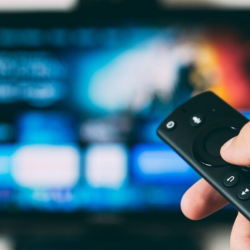Jenny Stanley, MD at Appetite Creative, talk to MediaCat Magazine about connected experiences for good, the importance of inclusivity and the benefits they offer across brand loyalty, engagement, real time adaptability and special functionality such as audio, as well for the visually impaired. She explains why connected packaging is more than just games and competitions.
Hi Jenny, thanks for talking to us. So why are brands getting more serious about using technology within packaging?

A recent survey we carried out revealed that connected packaging has experienced a rise in popularity in the last 12 months, with over four-fifths (81%) of those surveyed stating they have used connected packaging, compared to just over half (54%) in 2022.
Over four-fifths (88%) claim to be planning a connected packaging campaign this year and the majority (92%) of respondents consider connected packaging to be increasingly important to the packaging industry in the next 12 months and beyond. These numbers have ticked up year on year, with only two thirds (59%) in 2022 citing plans for a connected packaging campaign and 85% considered it important for the industry.
One major driver is the new EU-wide rules on packaging, also known as the EU Circular Economy Package, which have already had a significant impact on packaging companies across the European Union. Increased sustainability pressures on packaging producers and the introduction of new EU packaging laws have positively impacted the perceived value of connected packaging. The majority (91%) of respondents agree that it helps to improve the sustainability credentials of a company, vs 80% in 2022.
Packaging manufacturers are now investing in ways to ensure packaging can ultimately become zero-waste. We’re helping them to educate and inform consumers in an engaging way via connected packaging to ensure the end user understands how and why to use and recycle the packaging. We’ve been enabling marketers to deliver important information in a way that is easy to digest, empowering them to make the right choices, for themselves and the planet.
Why is it important for companies to get more creative with packaging?
Tapping into the raft of new opportunities that connected packaging can offer is a no-brainer for brands. It’s a flexible media channel that can interact with customers in real-time, find out more about who they are, and track product preferences. It’s easy to keep regularly updated — and can be used time and again to build positive brand associations with customers. It’s also a sustainable channel that has universal potential for brand loyalty, recognition and rewards, and data collection.
We actually see a 14% scan rate/click-through rate (CTR), which is much higher than a digital advertising campaign that’s usually around 0.01% CTR. One of our latest campaigns with KDD (Kuwaiti Danish Dairy) has already seen over 95k scans and 9k registrations. Consumers are increasingly open to branded experiences which go beyond the day-to-day consumption of a particular product, and they’re keen to share these positive experiences with their friends and family.
Packaging is extremely targeted marketing. It’s a direct gateway to a customer who has already bought the product, or is in the store aisle about to buy something similar. Most consumables are never decanted so the packaging it’s bought in becomes part of the consumer’s ongoing engagement and experience with the product and brand. It’s marketing that keeps on communicating throughout the duration of the product use; so connected packaging has a much longer shelf-life versus other media channels.
Are there any environmental concerns associated with the increased use of technology in packaging?
The pressure for brands to act responsibly has reached a crescendo. The climate crisis has emerged as a critical concern across every industry, highlighting the need for sustainable practices, especially the packaging industry. Sustainable packaging aims to minimise environmental impact by reducing waste, conserving resources, and adopting renewable materials.
Consumers are becoming more conscious of their purchasing decisions and favouring sustainable products. As a result, businesses are re-evaluating their packaging strategies to align with these evolving consumer preferences.
In response to this urgent call, manufacturers and businesses are increasingly adopting environmentally friendly packaging solutions and exploring the potential of connected packaging. Aligned to environmental and policy considerations, connected packaging and the wider technology supporting it provides a smart way to make packaging more sustainable, while educating and engaging customers.
What innovations can we expect to see in the field of connected packaging in the near future?
Consumers now see QR codes as a normal way to access branded content, games, and experiences — and they’re happy to share their personal data in exchange for this value add. Combined with the rise of connected packaging experiences, brands are likely to increase their investment in this supercharged media channel like never before, and the results are already impressive.
We’re also seeing large brands such as Coca-Cola and AB InBev announcing global strategies for connected packaging. If brands can better understand consumers and their consumption, it’s easier to predict their behaviour. By using the data collected via connected packaging, brands are finding patterns and predictions invaluable to inform product development, marketing and customer targeting strategies which increasingly rely on these global strategies for connected packaging.
Other key trends ahead for connected packaging include:
- Smart packaging also offers authentication and traceability, allowing customers to check the origination and authenticity of a product. This is particularly popular with luxury brands to discourage copies or imitations of expensive items such as whiskey and face creams. The use of sensors, RFID tags, and QR codes to provide customers with information about the product and its journey from the manufacturer to the end-user.
- With the growing trend towards e-commerce, there has been an increasing focus on personalised packaging solutions. Companies are using innovative technologies to create custom packaging that meets the individual needs of each customer. There are numerous examples of digital packing being created in smaller batches to ensure exclusivity and personalisation, which is a simple process when sharing information via a QR code added to a carton or box.
- The latest technology trends, such as AR and AI, also contribute to the next iteration of connected packaging. Augmented Reality (AR) is a popular tool to showcase products or even use for fun photo filters which are incredibly popular and highly shareable on social media. Artificial intelligence (AI) offers a way to adapt content in real time (depending on the weather, time of year or customer interest etc) and handle mass data quickly and easily at the touch of a button to create a more relevant, improved and personalised customer experience.
Your latest project with Tetra Pak and Banga engages consumers, but also contributes to a sense of community and eco-consciousness. Are these things becoming increasingly important for brands?
During this project with Tetra Pak and Banga, we learned the importance of integrating sustainability into every aspect of brand identity. We also discovered that consumers are increasingly interested in brands that actively contribute to social causes, such as supporting local charities.


Considerations around sustainability and doing good are definitely on the agenda for many brands — they’re typically keen for these factors to be integrated into connected packaging experiences. More and more we’re seeing explanations of how to properly recycle the packing, how it’s made to ensure the best possible sustainable credentials, product origin and details — there’s so much more you can include on packaging by making it smart.
In terms of doing good, a lot of the activity we’re seeing includes donations to charities, investing in local communities through education, tree planting or school initiatives.
Connected packaging can be updated and adapted in real time, for the time of year or key diary dates (e.g. adapt the approach between hot or cold weather, summer or winter etc) — and it can be tailored to key audiences and their interests or specialist requirements. For example, we’re seeing more audio options available for those who are hard of hearing.
Featured image: sustainable packaging / Appetite Creative




















